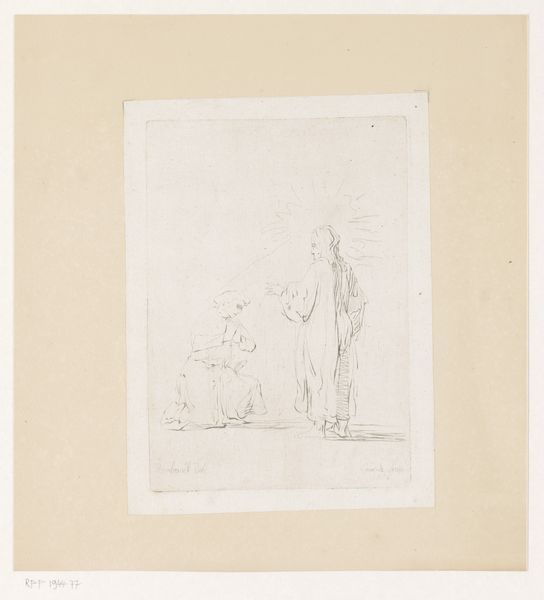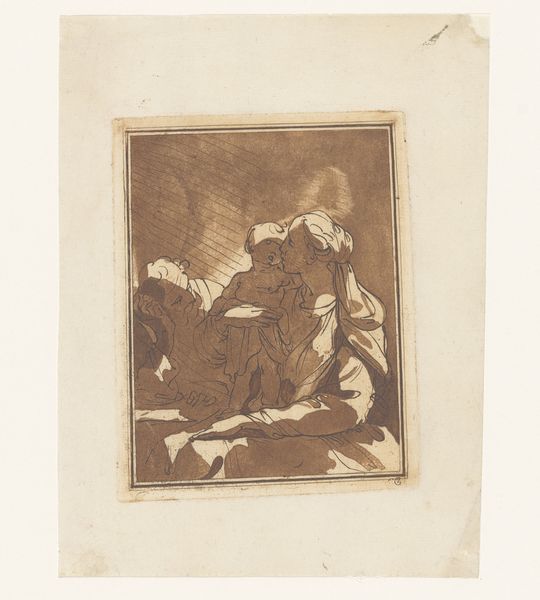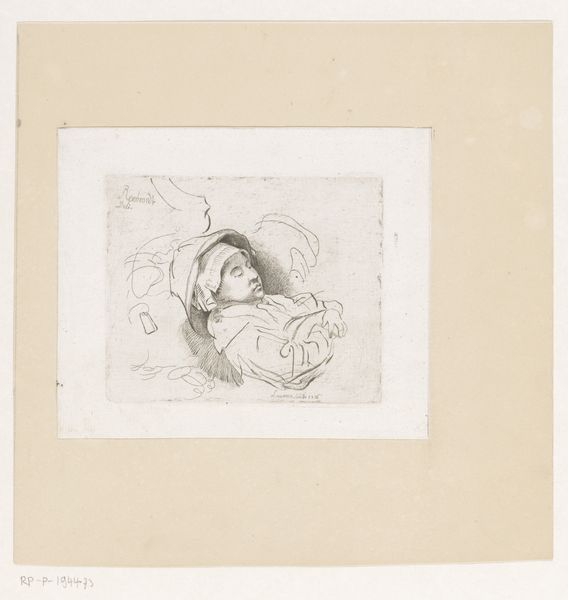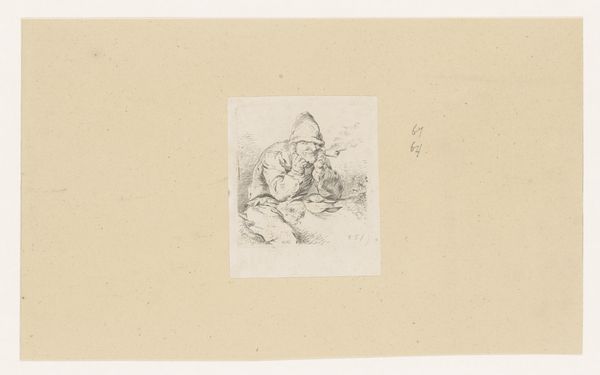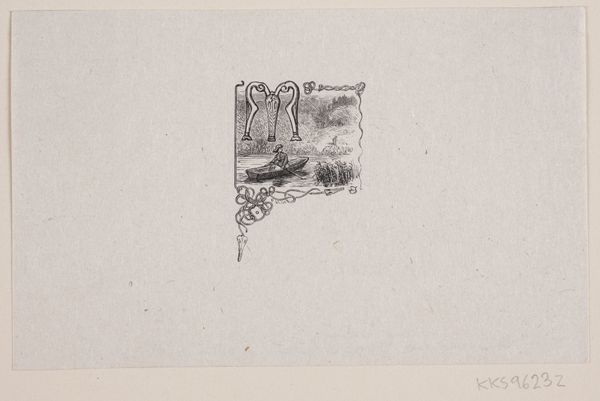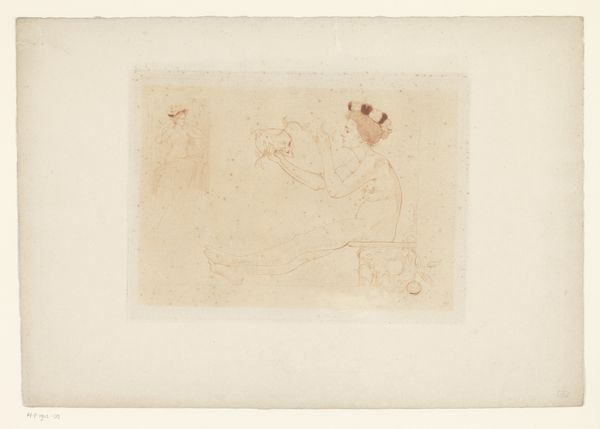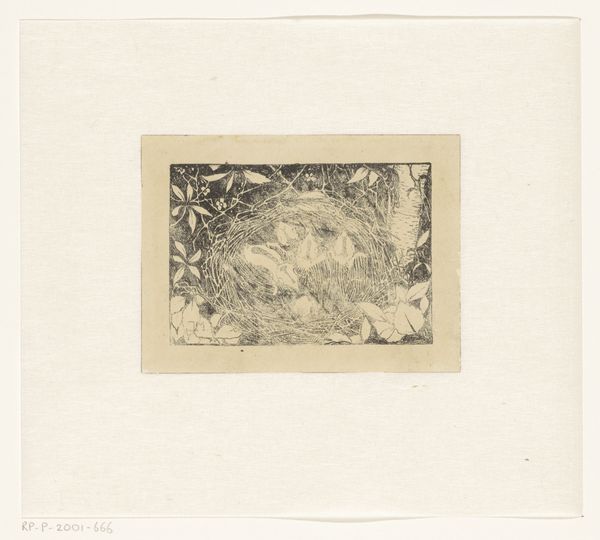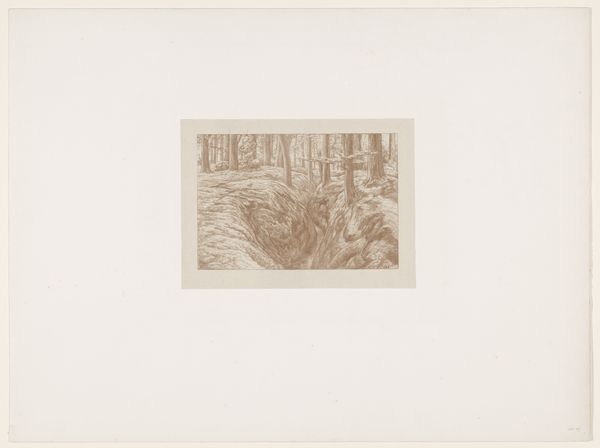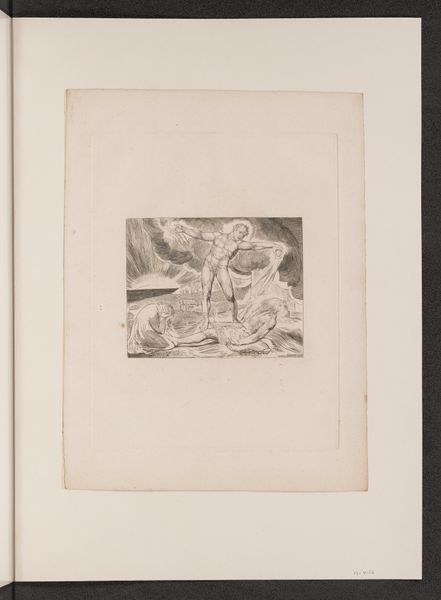
drawing, paper, ink
#
portrait
#
drawing
#
paper
#
ink
#
genre-painting
Dimensions: height 90 mm, width 109 mm
Copyright: Rijks Museum: Open Domain
Curator: Johann Daniel Laurentz created this drawing, "Schrijvende oude man," or "Writing Old Man" in 1756. It's an ink drawing on paper, part of a larger tradition of genre paintings. What's your initial take? Editor: My first impression is one of solitude and quiet contemplation. The monochrome palette focuses the viewer’s attention on the intricate lines. Notice how the cross-hatching gives volume and form to the old man’s robes and peculiar hat. Curator: Indeed. It's difficult to divorce this piece from its socio-historical context. Depictions of the elderly, particularly in roles of scholarship, were often used to signal wisdom and experience—virtues often undervalued, especially for marginalized communities and a growing wave of younger voices wanting change. Editor: I see your point. Yet, even removed from that, consider the lines themselves. Laurentz uses quick, decisive strokes to convey the textures—the crinkled paper, the rough fabric of the man’s clothing. The contrast is striking; it's a sophisticated exploration of tonal variation using only ink. Curator: That exploration also contributes to the power dynamic embedded within the scene. Who is allowed to record history, whose perspectives are valued enough to be preserved? Think about who was literate and had the privilege to write during the 18th century. Editor: While that's valid, aren't we potentially overshadowing the very skill required to render this image, that understanding of light and shadow. Doesn't art offer that opportunity for nuanced interplay beyond rigid categorization? Curator: Nuance, certainly. But it is equally valid to bring in historical perspectives and ask whose stories remain untold due to systemic power imbalances and inequalities. I feel we must not erase marginalized histories even in aesthetic analysis. Editor: I agree that we should consider it all. It is fascinating how this modest ink drawing from 1756, seemingly simple at first glance, triggers such divergent points of view, both through the close viewing of lines and engagement with history and society. Curator: Precisely, I believe approaching works of art with different sets of analytical and political lenses not only enrich our understanding of it, but also encourage a more democratic and inclusive society, overall.
Comments
No comments
Be the first to comment and join the conversation on the ultimate creative platform.
